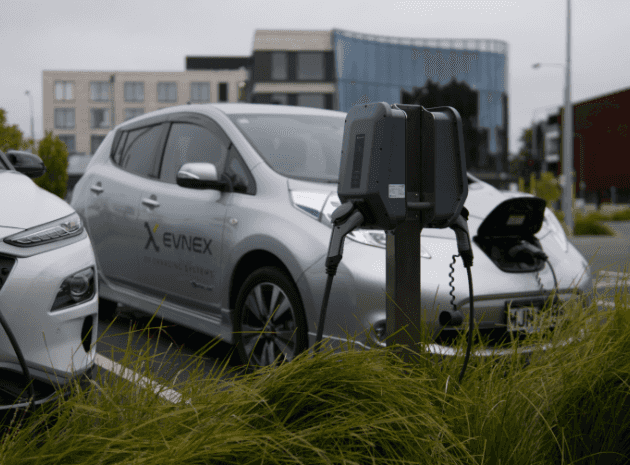Meet your decarbonisation goals while creating value
Recent trends are putting increasing pressure on the mining and metals industry. Companies must rethink their approaches regarding energy and emissions, smart mining technology, and remote or automated operations to thrive in the future.
The global energy transition brings specific challenges and immense opportunities to create value across your organisation.
Stakeholders are pushing for increasingly aggressive targets. While many organizations have committed to 30% emission reductions by 2030, target reductions are shifting to 20‑30% by 2025 and 50% by 2030.
The days of announcing targets without a credible plan are gone. Major investors are challenging boards, CEOs and CFOs on how they will achieve their commitments.
The business case for an energy transition is stronger than ever. Simple adjustments in cost‑focused efforts enhance emission reduction and deliver positive economic outcomes through energy efficiency, reduced costs and new business models.
Overcoming the energy transition
With mounting benefits for investment in the energy transition, many organisations are seeking robust solutions to some of these common challenges:
Building an energy transition plan that is clear and actionable
Securing lower-cost, low-emission energy for power and primary energy needs
Establishing the pathway for adoption of new technologies
How businesses react to the global acceleration towards emissions reduction will not just shape our present, but their future. Where should a business begin?
Boards and Senior Executives are now expected to have an informed view of emission reduction and energy transition.
Expectations and scrutiny are increasing, with corporates and governments announcing increasingly aggressive targets and associated transition programs. The days of announcing targets without a credible plan to back them up are long gone.
Many struggle to scope and design an executable roadmap to reducing emissions across their operation. The biggest challenge is balancing competing priorities and ensuring existing governance processes are enhanced to promote and facilitate energy and emission management.
The way forward
An executable roadmap that takes energy efficiency, renewable energy and mitigation of emissions into account can plot a new way forward. This helps address increased industry pressure and stakeholder demand for tangible solutions.
We have partnered with clients across sectors to develop energy transition roadmaps that will deliver 35‑65% reduction in emissions by 2030. In parallel, we are helping clients rethink how to practically achieve their carbon‑neutral ambitions by 2050.
Are organisations prioritising the elimination of greenhouse gases or begun to diagnose what it might mean to their businesses?
Electricity generation accounts for a large proportion of globally emitted greenhouse gases.
By generating or sourcing clean power and electrifying operations, organisations can ensure the reduction of emitted greenhouse gases in their operations.
Organisations often believe a future technology will assist them in addressing their emissions; however, the technology is already readily available, reliable and low‑cost and risks can be managed economically.
Cost‑effective strategy
The risk of greenhouse gas emissions should be underwritten with a transition strategy.
This could encompass a two‑phase plan that begins with an emission reduction diagnostic followed by the implementation of a sourcing process to secure a cost‑effective, reliable power supply.
Can an organisation be assured that every aspect of its business is performing to its highest capacity or are there blind spots?
When working towards energy transition, many organisations believe their need to act overpowers the need to take a measured, considered approach.
Organisations must define their objectives, goals and targets, as well as how different functions within the organisation need to operate to achieve them.
Further, many do not consider all options available to them. For example, could their financial return be improved by considering tactical decisions, such as improving operational planning and attracting alternative green finance?
No two energy transitions will ever be fully alike, and only through tailored insight of an organisation's needs and opportunities, can a solution be found that avoids costly, ‘off the rack’ approaches to favour synergy and integration.
Critical elements
In implementing a successful energy transition, we underline three critical elements for organisations to prioritise: the need to reduce, renew and mitigate.
Our approach is to rapidly understand what is required, build a roadmap and begin embedding it into the business.
.png)
‟Addressing decarbonisation and the emission challenge is transforming how the world interacts with and uses energy. Organisations must develop a clear view of where to mitigate risk and where to seize new opportunities. The energy transition is not a technical/engineering problem that needs to be solved over time - it is a fundamental business imperative that needs action now.”
Skipp Williamson
Founder and Senior Managing Director
Our client work across industries and functions has provided us with the opportunity to rethink energy, supply and how to capture no‑regrets emission reductions.
Sites can move to >60% renewable electricity, often funded by third parties yet retaining control, while also saving Opex
0%
Efficiency savings
energy efficiency efforts deliver 10-15% cost savings
0%
Additional savings
additional 10-15% in savings possible through rethinking operations’ energy demand/supply
0%
Reduction savings
in addition to cost savings, a 30-50% reduction in emissions is achievable
Our Energy Transition Consulting Practice in the media
Read our latest discussions in the press on how you can navigate to Net Zero
Stay up to date with our latest insights
Our energy transition client success stories
Explore how our energy transition consultants are helping clients accelerate their journey to Net Zero
